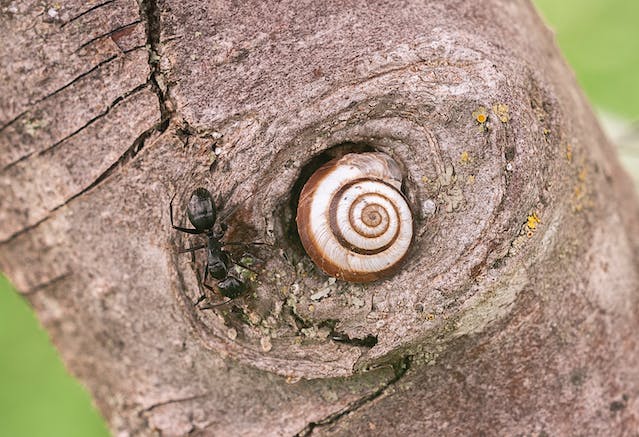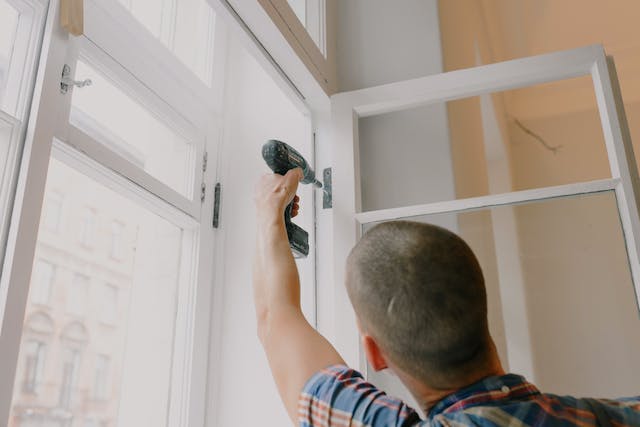Carpenter ants can be a common concern for homeowners, particularly if you live near a densely forested area or where there’s considerable rain. While they don’t consume wood as termites do, they can cause structural damage by excavating galleries within them.
To effectively manage carpenter ant infestations, it’s crucial to understand what draws them to your property. In this comprehensive guide, we’ll delve deeper into the question: what are carpenter ants attracted to?
Understanding Carpenter Ant Behavior
Carpenter ants exhibit unique behavior compared to other ant species. They are primarily attracted to damp, decaying wood, as they prefer nesting in areas where moisture is prevalent.
Despite the damage they cause, carpenter ants won’t eat away at your wood like termites. However, that doesn’t make an infestation a walk in the park. As their name suggests, carpenter ants prefer to tunnel through wood, creating nests and depositing their young within.
These ants are known for their highly developed social structure, characterized by colonies of worker ants, soldiers, and a queen. The worker ants are responsible for foraging while the soldiers defend the colony. The queen’s primary role is to lay eggs, ensuring the continuity of the colony.
What Are Carpenter Ants Attracted To?
To effectively prevent termite infestations, you should know everything that could bring these pests to your door. So, what are carpenter ants attracted to?

- Moisture: Damp or water-damaged wood is a prime location for them to establish their nests. Leaky roofs, pipes, or improperly sealed windows can create moist environments that carpenter ants find inviting.
- Decaying Wood: Rotting or softening wood allows carpenter ants to excavate with ease. Old trees or deteriorating wooden structures become attractive nesting sites.
- Food Sources: What are carpenter ants attracted to indoors? They are often attracted to sweet and protein-rich sources. This can include sugary spills or pet food left out in a household setting. Maintaining a clean and sanitary environment is essential to minimize their attraction to these food sources.
- Wood Structures: Naturally, carpenter ants are attracted to wood structures. This attraction doesn’t just pertain to homes; it extends to other wooden structures such as sheds, garages, and even wooden playground equipment. Carpenter ants are opportunistic nesters, and they will explore any wooden structure that offers suitable conditions for nesting.
- Warmth and Shelter: Carpenter ants seek shelter and warmth like most pests. During colder seasons, they might venture indoors, searching for a cozy nesting site. You can deter their entry by treating the wooden components in your home and investing in air-tight insulation.
Minimizing Carpenter Ant Attraction: Proactive Measures
With a grasp of what draws carpenter ants to your home, let’s delve into practical strategies for minimizing their presence and safeguarding your residence from potential infestations.

- Moisture Control: An initial and crucial step in carpenter ant prevention revolves around managing moisture. Swiftly address water-related concerns, fixing leaky roofs, pipes, or other moisture sources that might entice carpenter ants. Check your gutters and downspouts to ensure they’re draining correctly and not collecting water on your roof; long-standing water can weaken your roof and even encourage other insects like mosquitoes to nest around your home.
- Wood Maintenance: What are carpenter ants attracted to? Rotting wood, of course! Regularly inspect and tend to wooden structures on your property. Replacing or repairing any deteriorating or damaged wood helps eliminate potential nesting sites, significantly reducing the appeal of your property to carpenter ants.
- Food Management: Keep your home clean and free of crumbs or spills that can lure ants in search of food. Safeguard sweet and protein-rich foods in tightly sealed containers to limit access.
- Sealing Entry Points: Examine doors, windows, and your home’s foundation for any cracks, gaps, or openings. If you find anything unusual, promptly seal these areas to deter an ant infestation. We advise you to check with a home repair specialist before making any alterations to your home. These individuals can easily find where these pests enter and safely repair the open spaces.
- Professional Pest Control: In cases of a challenging carpenter ant infestation or for proactive measures, consider enlisting the services of professional pest control experts.
When dealing with wood-destroying insects like termites and carpenter ants, you should rely on a company with the right experience and expertise. That’s why proof. Pest Control is your trusted partner in pest management!
With years of dedicated service and a deep understanding of the biology and behavior of these wood-damaging pests, our team is well-versed in practical and strategic pest control solutions.
We are trained to identify, treat, and prevent infestations of termites and carpenter ants, two of the most formidable adversaries homeowners face. Our proactive approach includes thorough inspections, targeted treatments, and ongoing preventative measures.
We take pride in our commitment to preserving the structural integrity of your home, offering peace of mind and protection against these wood-destroying insects. With a focus on both prevention and resolution, proof. Pest Control is your reliable partner in safeguarding your property against the ravages of termites and carpenter ants. Contact us today

